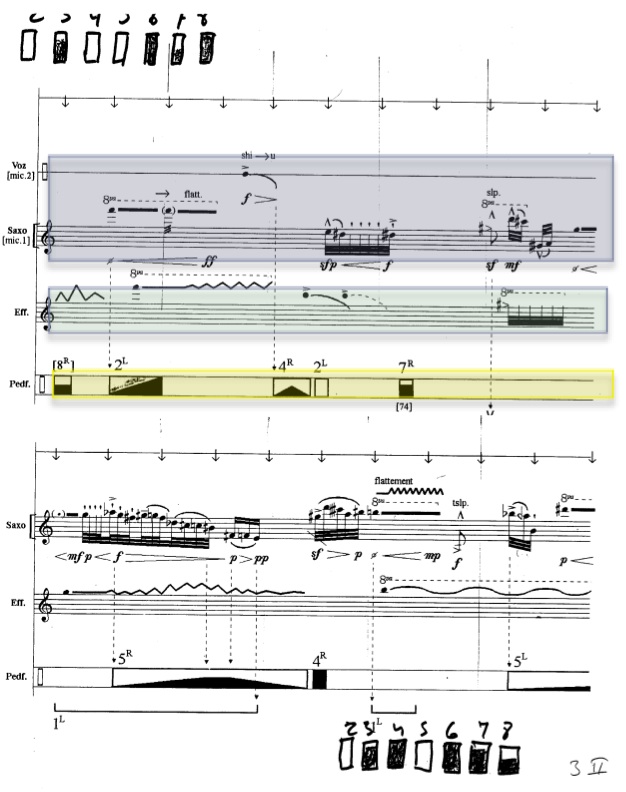International symposium, Thursday, April 5th 2012, IRCAM
Instrumental music score is perfectly codified and the sound that results is known by the person who analyses, but the lack of a standardized coding in the case of mixed music creates numerous difficulties for analysis. These difficulties are due mainly to the fact that the electronic device is unknown, its access is complicated and it undergoes rapid and permanent changes with technological developments.
We can see that the obstacles to writing, and then to analysis, are caused by the notation of the performance - Sound production - on the electroacoustic device. As for a classical instrument it is essential to find inside the score the sound produced by the device as well as the means to achieve it. In the absence of one of these elements in the score, the analysis of the work will be greatly affected and difficult.
To illustrate this we present two types of scores. On the one hand some scores are written for an "open" device where the presence of an assistant is highly desirable because the musician does not necessarily understand the device. On the other hand we will present the experience with a "closed" electronic device that has existing for several years and is currently developed within Musinfo.
As soon as the device was created, Musinfo engaged reflection on the notation. Over time and for purely pragmatic reasons, composers and interpreters working with the device developed a notation combining classical notation with graphic elements that we will present.



